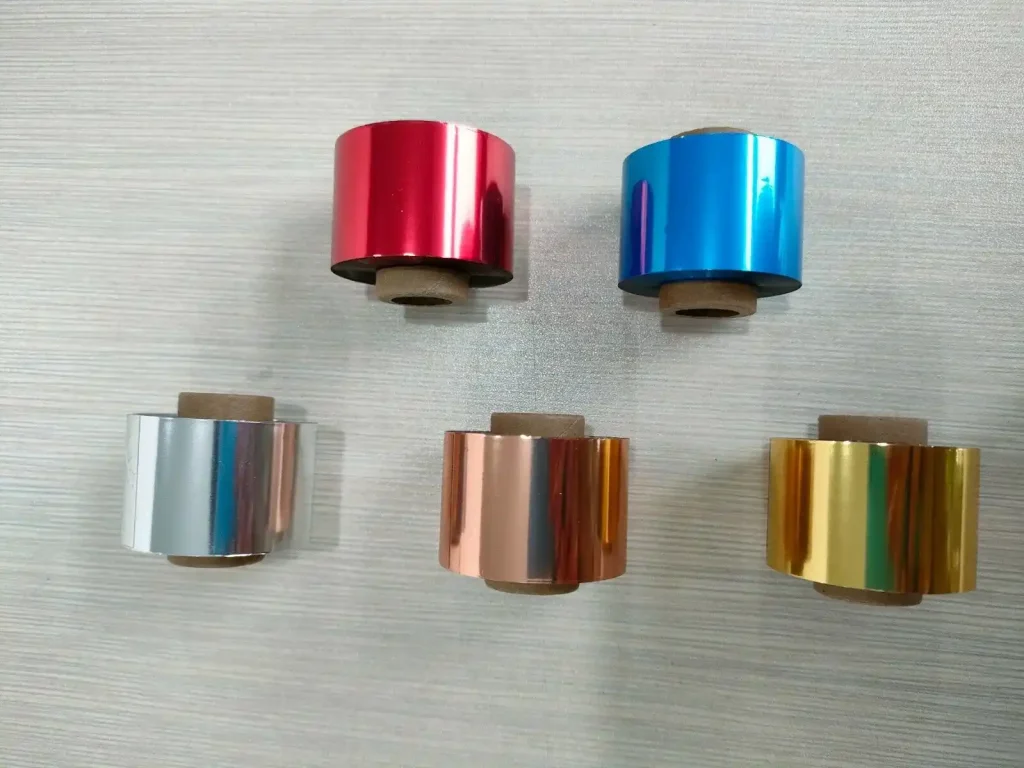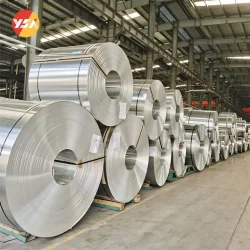Pure aluminum is a 100% recyclable metal, but is the colored aluminum foil we use in our daily life 100% recycled aluminum foil or not? In this article, we will discuss what the coating of colored aluminum is and how recyclable it is.

Coating in Aluminum Foil Colored
Coating of aluminum foils is generally achieved by printing or wet coating ( lacquering ) processes. These coating methods allow for the uniform application of paint or pigment to the surface of aluminum foil also an important influence of recycled aluminum foil.
Coating Methods
Printing: Printing is a commonly used coating method suitable for adding patterns, text or decorations to the surface of aluminum foil. Printing is usually carried out using flexographic or offset printing techniques, whereby the coating or ink is transferred to the aluminum foil through a printing plate.
Wet Coating (lacquering): Wet Coating or Lacquering is a method of applying paint uniformly to the surface of aluminum foil. This usually involves pouring the coating onto the foil and then using a squeegee or roller to distribute the coating evenly over the surface of the foil.
These coating methods are more suitable for applying coatings directly to aluminum foil than methods such as roller coating, spraying or electrophoretic coating used for treating aluminum coils or sheets, and ensure that the coating is uniform, adheres well and maintains the special properties of the aluminum foil.

Coating Materials
Pigments: Pigments used in coatings can be organic or inorganic. Organic pigments are usually organic compounds that offer a wide choice of colors and good light resistance. Inorganic pigments, on the other hand, are inorganic compounds that usually have high heat and chemical resistance. Common pigments include titanium dioxide, iron oxide yellow (used to provide a yellow color), and others.
Raw materials for coating of aluminum foil colored are an important factor to consider about recycled aluminum foil.
Resin: Resin is the key ingredient in coatings and is used to provide adhesion, abrasion and weathering resistance of the coating. Common resins include polyester, epoxy, polyurethane and acrylic.
solvents: solvents in coatings are used to regulate the flow, viscosity and drying speed of the coating. Common solvents include organic solvents (such as alcohols, esters and ethers) and water.
curing agents: in some coating systems, curing agents are used to facilitate the curing process of the coating to achieve better durability and hardness. Curing agents can be chemical reactants or auxiliary additives such as amino resins, isocyanates and polyacids.
Organic pigments are often used for colored foils: There are some differences in the structure, properties and application of organic and inorganic pigments. Organic pigments are a common choice for coloring aluminum foils, whether by printing or wet-coating (coating) processes. They are available in a wide range of color options, including metallic, gold, silver, and colored to meet different usage needs and decorative effects.
Organic pigments have the advantage of offering a wide range of color options for rich color effects and decorative effects. Organic pigments also provide a high degree of transparency, allowing the coating to shine through in the light while retaining the metallic texture of the aluminum foil. In addition, organic pigments also have good light resistance, which makes the coating less likely to fade in the sun.

Yongsheng Aluminum Foil
| Alloy | 1xxx Series: 1050, 1060, 1070, 1100, 1235 |
| 3xxx Series: 3003, 3004 | |
| 5xxx Series: 5052 | |
| 8xxx Series: 8011, 8021, 8079 | |
| Temper | F, O, H14, H16, H18, H19, H22, H24, H26, H28, T etc. |
| Thickness | 0.006-0.2mm. |
| Width | 20mm-1600mm (1.6m). |
| Diameter | Inner Diameter: 76/152 mm; Outer Diameter: Support Customization. |
Good thickness consistency. Free sample.
Yongsheng Aluminum is a raw material manufacturer of aluminum foil (we do not do the later processing such as laminating, printing, gluing, etc., we only provide aluminum foil substrate).
| Delivery Time | Ready stock 7-10 days, on time delivery guaranteed |
| Loading Port | Qingdao Port, Tianjin Port, Shanghai port. |
| Price Terms | FOB, CIF, CFR, EXW etc. |
| Payment | L/C, T/T, Western Union, etc. |
| Quality Control | Mill Test Certification is supplied with shipment.Third Party Inspection. |
| Certificates | MTC, ISO9001,SGS, ROHS,DNV,TUV,ISO14001,ABS,CCS,CE |
| Standards | ASTM-B209, EN573-1, GB/T3880.1-2006, GB/T 24001-2016, GB/T 19001-2016 |
FAQ: Is there real 100% recycled aluminum foil?
Yes, there is recycled aluminum foil available on the market that is made from 100% recycled aluminum. Recycled aluminum foil is produced by collecting and processing used aluminum products, such as beverage cans, food containers, and other aluminum packaging waste. The collected aluminum is then melted down and reprocessed to create new aluminum products, including aluminum foil.
The process of recycling aluminum requires significantly less energy compared to producing aluminum from raw materials, making it an environmentally beneficial option. By using recycled aluminum foil, we can reduce the demand for virgin aluminum resources and minimize the impact on the environment.
When purchasing aluminum foil, you can look for products labeled as “recycled aluminum foil” or “made from 100% recycled aluminum foil” to ensure that you are choosing a more sustainable option.

FAQ: What is the difference between organic pigments and inorganic pigments?
Structure: Organic pigments are color particles composed of organic compounds, while inorganic pigments are color particles composed of inorganic compounds. Organic pigments are usually carbon-based compounds with more complex molecular structures, while inorganic pigments are composed of metal oxides, metal salts or other inorganic compounds.
Light resistance: Generally speaking, inorganic pigments have better light resistance than organic pigments, i.e. they are less susceptible to fading due to light exposure. This makes inorganic pigments more commonly used in outdoor applications and where long term durability is required.
Heat and chemical resistance: Inorganic pigments usually have high heat and chemical resistance, and are able to remain stable under high temperatures and chemical corrosive environments. This makes inorganic pigments suitable for some applications with special requirements, such as paints, ceramics and plastic products.
Color range and transparency: Organic pigments usually offer a wider choice of colors, including bright reds, yellows, blues and so on. Inorganic pigments have a relatively narrow color range. In addition, organic pigments usually have higher transparency, while inorganic pigments have higher hiding power.

